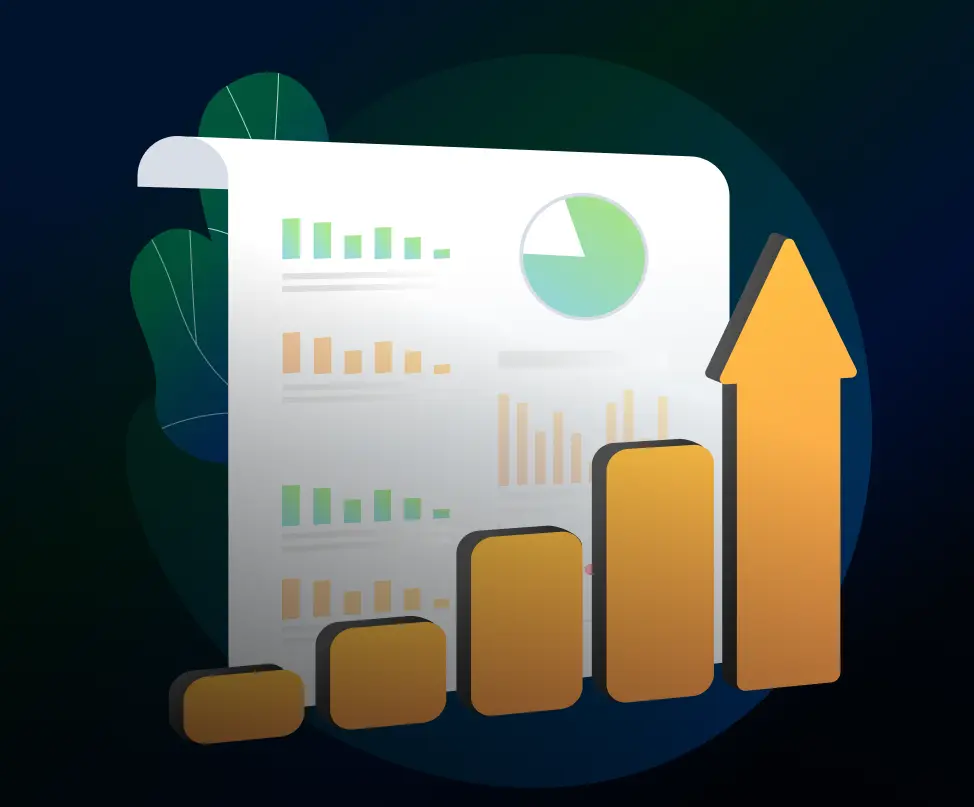Three opportunities you're missing out on by neglecting the non-bank liquidity provider method
- Why can't we do without liquidity aggregation?
- FX PoP and FX NBLP in a nutshell
- Why choosing the NBLP may be the right decision for your business?
- Wrapping it up
Liquidity aggregation is one of the cornerstones of any FX business. Good liquidity is the key to a high turnover on your trading platform and the influx of quality clients. And while these old commonplace truths hardly need to be explained to anyone, the confrontation between prime of prime and non-bank liquidity provider methods is a relatively novel issue. Moreover, we are increasingly noticing that many are misinterpreting the very concepts of PoP and NBLP liquidity, which can lead to poor choices or detrimental business consequences. The purpose of this publication is to provide a clear definition of what the first and second methods are and to highlight our arguments in favor of NBLP as the most promising way to collect liquidity for your FX business.
Why can't we do without liquidity aggregation?
So what is liquidity aggregation’s main value, plainly speaking? We hope this goes without saying, but unless you are a huge bank and have your own liquidity reserve, you will have to think about what method of aggregation you want to use. Without a liquidity provider, an ordinary Forex broker would not be able to satisfy all of their clients' orders, meaning that it will not be viable in the long term perspective. For each client's order, a seller must be found on the reverse side, and vice versa, and achieving such ideal conditions when the buyer and the seller will meet in a deal with the right volume at the right price at the right moment is a non-trivial task.
A liquidity provider is usually a legal entity that provides more favorable conditions to a broker or exchange, due to the large volumes of supply and demand available. It can also be thought of as a large supplier of goods in a regular retail chain. In the FX domain, they are often banks. The list of major liquidity providers includes international financial exchanges for trading futures, options, and other financial instruments.
Sidenote. A certain model is possible in this business, which allows operating without liquidity aggregation. Companies that use this model only use the quotation flow from a bank or an ordinary financial service, and they conduct all client transactions using internal clearing, without exiting the platform and searching for the other side of the transaction, i.e. the counterparty, which is the company itself in this case. We can only say that this model is not attractive to informed clients.
FX PoP and FX NBLP in a nutshell
Prime of prime is a long-established method in the industry. As the definition may suggest, it involves connecting the services of a single company providing the brokerage business with Tier 1 liquidity that would not otherwise be available.
Sidenote. Tier 1 liquidity providers include international banks such as Morgan Stanley, Bank of America, Goldman Sachs, J.P. Morgan, Barclays Capital Bank, Citi Bank, Deutsche Bank, Nomura, and others.
NBLP method, non-bank liquidity provider method, or pure liquidity aggregation, implies utilizing software (namely, a liquidity aggregator) that allows a brokerage business to provide the necessary bids at the best prices collected from different liquidity providers.
Why choosing the NBLP may be the right decision for your business?
As a company that develops trading software, we often negotiate with clients who are also looking for a solution to organize liquidity flows within their business. A situation we encounter with regular frequency is when a client asks to be associated with a single liquidity provider, being completely unaware of an alternative method that we believe could give their trading platform more independence and flexibility, while in no way limiting their ability to generate profits. We have highlighted three arguments in favor of the latter statement.
Technological and operational independence
The first point of this sub-headline looks pretty obvious, but we still think it is necessary to notice this: in the case of the prime of prime method, you have to rely on the software solutions that your liquidity provider uses. In case something goes wrong on their side, it automatically indicates difficulties for your platform as well.
Sidenote. As a rule, large Tier 1 suppliers use reliable software, meaning that there is multi-stage protection against failures. However, if you use your own liquidity aggregator, customized to your specific needs, you will have more controls to debug the situation in case it needs to be done promptly.
Now let's move on to operational independence — this is the main reason why, in our opinion, every trading platform operator should think very carefully before opting for the PoP or NBLP method. Thing is, there are situations where a prime of prime provider can directly affect the way you manage your brokerage business.
The thing is, as companies who work by the prime of prime method themselves admit, your relationship with your provider is very much dependent on the qualitative and quantitative values of the flows that your business channels. And if your flow becomes the cause of losing money for a provider, there are several options for how things will develop, each of which will prove unpleasant for your business in one way or another.
- The most common way out of this situation for a provider is to widen their spread. And in this case, even the fact that the road to Tier 1 is open to you will not indicate such a great benefit.
- There have been known cases of providers singling out traders who were “toxic” to them and demanding that they be cut off from the flow. Legal departments of PoP-providers may also consider finding loopholes in agreements to pay only part of the profits or not pay them at all.
- In the extreme case, if the broker and the supplier do not find an understanding, a complete termination of the relationship may be considered. For the brokerage business, this can mean huge losses or the risk of leaving the market.
Sidenote. Situations with profitable traders are especially dangerous for the “pseudo-brokers” with no real external liquidity described in the first section sidenote. For example, in 2015 there was a sharp movement of the Swiss franc, and some of these Forex brokers simply disappeared. The companies simply did not have the funds to pay traders, who ended up in good profits.
While using the NBLP method, you don't have to negotiate with a provider — you just choose a convenient option from the list of those connected to your aggregator.
Automated slippage control
Price slippage is a sign of insufficient liquidity. And this is one of the factors of the broker's liquidity providers assessment. Frequent slippage is a sure sign of a poor quality provider, but the problem is that this factor often doesn't always come up during testing.
So how do you determine the very boundary when it becomes clear that a supplier is performing poorly? For example, if a broker who uses the services of such a provider has orders sliding in an active session, this is a “red flag”.
Sidenote. This indicator should not be checked during important economic events. At this time, a huge number of market participants withdraw their orders from the order book, thereby greatly reducing liquidity. It is for this reason that volatility increases sharply and significant slippage may occur.
Liquidity aggregators completely eliminate this kind of headache. For instance, the filter system built into the TickTrader Liquidity Aggregator allows setting the slippage percentage that the broker is ready to tolerate when working with providers. Moreover, clients can also customize the slippage percentage within the value set by the platform operator.
Access to the true ECN model
ECN, or Electronic Communication Network, is a model that bundles together the largest liquidity providers, or Tier 1 providers mentioned above. Generally, medium-sized brokers and their clients cannot get direct access to this network without an agreement with a major prime of prime provider that will charge commissions for its services.
However, using a liquidity aggregator with certain features, namely a matching engine, will enable you to organize a similar ECN model internally in your platform, without placing small orders on external markets. Of course, this feature is meaningful only if the broker has already gained a sufficient number of clients, but if this condition is met, the internal ECN-model becomes extremely valuable for any broker.
The proprietary matching engine, which is the heart of TickTrader Liquidity Aggregator, enables you to design your own ECN model, meaning that your platform can avoid paying commissions to liquidity providers for a large part of your orders.
Wrapping it up
Of course, in the end, it is up to you to choose what quality and amount of liquidity you work with, and what method your technical equipment allows you to use. We only hope that this piece will help you make a more informed choice.
If you have questions about how to organize independent liquidity aggregation on your platform, contact us and we will be happy to unfold a detailed presentation for you.



